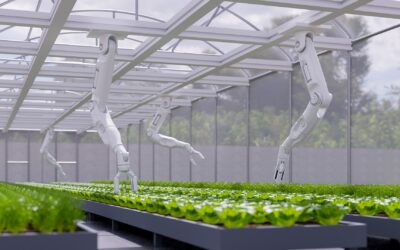The days when successful manufacturers could focus exclusively on costs and logistics are over. The 21st century has brought with it a number of changes to industries all across the economy, and manufacturing is no exception in this regard. Chief among these new, modern-day business concerns is sustainable business practices. For manufacturers, this comes down to the concept of sustainable manufacturing.
If you’re not sure what sustainable manufacturing means or how sustainable practices can impact your business, you’re not alone. Both concepts are relatively new, particularly in the manufacturing sector. Still, any business that ignores these important developments does so at its own risk. The future is here, and today’s companies have no choice but to adapt.
Sustainable manufacturing, in short, is the adoption of policies, processes, and procedures that minimize the environmental impact of manufacturing while still remaining economically feasible. A truly sustainable manufacturing operation will likely reduce their overall costs in the long term while also creating a more eco-friendly process.
Before getting into the steps each business can take to implement these processes, we’ll look at why sustainable manufacturing is important, what trends are impacting the industry today, and what changes could be expected in the future. We’ll also analyze how smart manufacturing and other technological advancements can bring your business to the next level, all while elevating your brand reputation. These tips should help any manufacturer improve profitability, reduce regulatory risk, and generate positive sentiment in the marketplace.
Why Does Sustainable Manufacturing Matter?
We’ll start with the basics. Those who have been running a safe and profitable operation may wonder why it is important to think sustainably in the first place. After all, if it isn’t broken, there’s no reason to fix it, right?
Not quite. Sustainable manufacturing represents a proactive approach to the industry’s future concerns. Rather than get caught behind when regulatory or reputational risks start to affect your business, being proactive about sustainability can set a company up as an industry leader for years to come.
That said, sustainability is more than just a buzzword – it’s a legitimate business strategy with unique competitive advantages. While it is true that sustainable manufacturing focuses (in part) on environmental impacts and positioning your business as a “green” one, it also impacts the bottom line. This same focus also reduces waste and material costs, increasing the efficiency of the business.
Essentially, sustainable (and smart) manufacturing processes investigate the totality of a business’s consumption. This involves many of the same items a cost-conscious business owner or manager would be looking at already – water usage, waste, alternative or cheaper energy sources, leaner or smarter production processes, simplifying packaging, etc. Inefficient or outdated plans with regard to these items tend to create unnecessarily high costs, but they also have outsized environmental impacts. Sustainable manufacturing targets both problems simultaneously.
Needless to say, adopting environmentally friendly processes has impacts beyond those that we can quantify as costs. Studies dating back years have found that sustainable brands have improved value, build better loyalty with customers, and have lower reputational risk. If that isn’t enough, most sustainability practices will proactively make a business more compliant with future regulatory changes, reducing outside risk and potentially lowering liability and compliance costs along the way.
Smart Manufacturing & Sustainability: A Perfect Match
One can’t talk about sustainable manufacturing processes without spending a little time on smart manufacturing and technological improvements. One assists the other like two halves of a whole.
Smart manufacturing is, most simply, the implementation and use of new technologies to receive usable (actionable) data on your current processes and improve efficiency. This is achieved through internet-connected devices and machinery that monitor your operation and report back useful information on waste, timetables, safety concerns, power usage, and other operational data that make up the backbone of a business.
The implications of this technology for a business that’s focusing on sustainability are immeasurable. In addition to highlighting areas where manufacturing slows down or becomes less efficient, these smart systems will also highlight where power/resource usage is highest, areas that are ripe for automation, or processes that produce a disproportionate amount of waste.
Naturally, all these tools can be quite useful to a business that’s looking to reduce materials and labor costs or improve safety. They also work hand-in-hand with improving resource utilization and reducing environmental impacts, two of the key tenets of a successful, sustainable enterprise.
Becoming More Sustainable
Wanting to improve your business’s reputation, efficiency, and the bottom line is one thing. Making the necessary changes is another. Rather than a distant and vague objective, like “become more green,” business owners would do well to set up concrete plans with achievable objectives on their way to sustainability. Taking the time to complete our steps below will bring managers and owners a long way toward setting up their businesses for the long term.
1. Determine your needs – Figure out where your business stands in the sustainability process. Do you already have the necessary technology, and only need to make changes based on the data that’s provided? Or do you need new tech and machinery that can help you identify the areas that need improvement? Without the right information, a business is only guessing.
2. Review your energy consumption – How reliant is your business on fossil fuels? How significantly are those fuel costs impacting your bottom line? Are alternatives available that will pay for themselves in short order? Can you reduce fuel consumption in the meantime?
3. Critique your machinery – Are you using outdated machines that consume a massive amount of coolant, regularly break down, or emit tons of pollution? Would newer, smart machinery eliminate these costs and reduce your environmental impact simultaneously? Be sure to look at items both large and small.
4. Set a time-saving plan: Any business should want to run at peak efficiency. If you can find ways to run your production cycle faster – either using existing machines or new ones – take advantage of that. Faster production cycles mean more machine downtime, which in turn translates to less energy consumption and waste.
5. Analyze your packaging and logistics – The manufacturing process itself isn’t the only area that can be inefficient. Look at your policies for receiving materials and how the end product is handled. Both could reveal opportunities to be more sustainable and cost-effective.
6. Target specific areas – Trying to overhaul an entire operation at once can be both overwhelming and unwieldy. Look at the areas you’re aiming to improve and identify the ones with the most immediate need. Is it resource consumption? Safety? Waste in your logistics or packaging? Set plans for each area of improvement and tackle them one by one.
Building an overall action plan around the above steps should help any business quickly identify cost-saving, sustainable measures that can be implemented in their operation. Smart manufacturing can assist in identifying these opportunities quickly and more accurately, sometimes alerting managers and engineers to issues they weren’t even aware of.
Either way, turning your manufacturing operation into a sustainable one is a great way to increase brand reputation, lower costs, and make your business modernized and prepared for the future. There’s no sense in waiting – start building your plan today so you can secure your business’s future for decades to come. When saving money and doing the right thing are one and the same, there’s really no question. Sustainable manufacturing is the answer.
Automation Alley is a World Economic Forum Advanced Manufacturing Hub (AMHUB) for North America and a nonprofit Industry 4.0 knowledge center with a global outlook and a regional focus. We facilitate public-private partnerships by connecting industry, education and government to fuel Michigan's economy.




